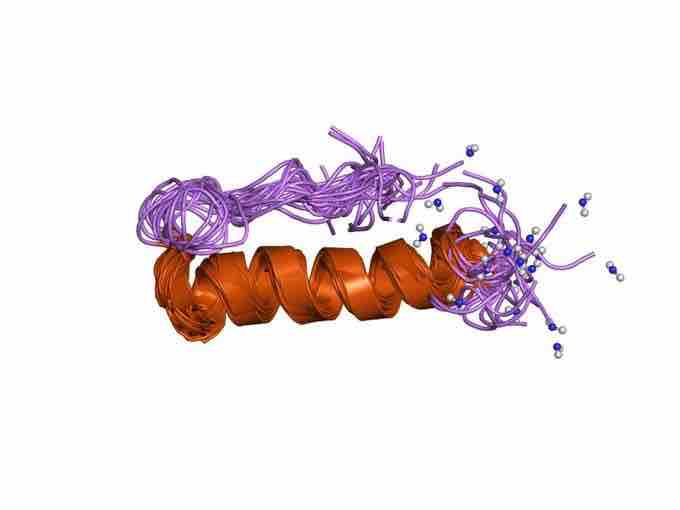A hormone is a chemical released by a cell or a gland in one part of the body that sends out messages that affect cells in other parts of the organism.
There are three classes of hormones:
- Peptide hormones
- Lipid-derived hormones
- Monoamine hormones
Peptide Hormones
Peptide hormones consist of short chains of amino acids, such as vasopressin, that are secreted by the pituitary gland and regulate osmotic balance; or long chains, such as insulin, that are secreted by the pancreas, which regulates glucose metabolism.
Some peptide hormones contain carbohydrate side chains and are termed glyco-proteins, such as the follicle-stimulating hormone. All peptide hormones are hydrophilic and are therefore unable to cross the plasma membrane alone.

Peptide hormone
Representation of the molecular structure of a peptide hormone.
Lipid-Derived Hormones
Lipid and phospholipid-derived hormones are produced from lipids such as linoleic acid and arachidonic acid. Steroid hormones, which form the majority of lipid hormones, are derived from carbohydrates; for example, testosterone is produced primarily in the testes and plays a key role in development of the male reproductive system.
Eicosanoids are also lipid hormones that are derived from fatty acids in the plasma membrane. Unlike other hormones, eicosanoids are not stored in the cell—they are synthesized as required. Both are lipophillic and can cross the plasma membrane.
Monoamine Hormones
Monoamine hormones are derived from single aromatic amino acids like phenylalanine, tyrosine, and tryptophan. For example, the tryptophan-derived melatonin that is secreted by the pineal gland regulates sleep patterns.